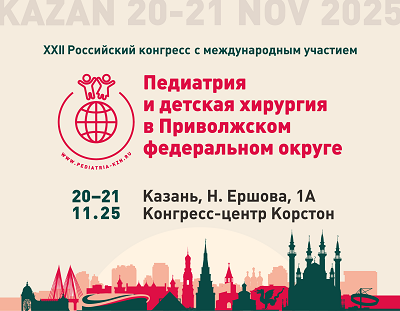Peculiarities of peroxide homeostasis and cytokine status in children with community-acquired pneumonia of various etiologies
https://doi.org/10.21508/1027-4065-2025-70-5-63-69
Abstract
Respiratory diseases in children occupy a leading position in the structure of childhood morbidity and are the focus of attention of pediatricians both due to their high prevalence and the high risk of developing complicated and chronic forms. An urgent task of modern pediatrics is to study not only the etiology, but also the pathogenetic mechanisms of the development of lower respiratory tract lesions due to the difficulties in diagnosis and the high risk of developing life-threatening conditions. Due to the special role of Streptococcus pneumoniae among pneumotropic pathogens, it was of interest to search for characteristic etiopathogenetic features of the development of pneumonias caused by this pathogen.
Purpose. To study the activity of lipoperoxidation indicators, as well as the course of pro- and anti-inflammatory reactions by the level of cytokines in the peripheral blood in children with community-acquired pneumonia of various etiologies.
Material and methods. The study included 129 children (58 boys and 71 girls) aged 5 to 17 years with various morphological variants of community-acquired pneumonia, who were divided into groups based on the etiology of the pathogen. All children had their levels of TNF-α, IL-1, IL-4, and IL-8 interleukins determined using ELISA, as well as their levels of malondialdehyde, antioxidant activity, and ceruloplasmin in their blood serum.
Results. It was shown that 24.8% of the examined children had Streptococcus pneumoniae-induced pneumonia, with 84.3% of them showing clinically significant intoxication and respiratory disorders, and 65.6% showing a decrease in O2 saturation to 91–93%. This group also showed the highest values of pro-inflammatory cytokines, malondialdehyde, and the lowest values of total antioxidant activity and ceruloplasmin. The more subtle clinical symptoms of other types of viral pneumonia were accompanied by parallel increases in pro- and anti-inflammatory cytokines and less significant disturbances in peroxide homeostasis.
Conclusions. Outpatient pneumococcal pneumonia is usually characterized by severe clinical course, high pro-inflammatory cytokine activity, and impaired peroxide homeostasis.
Keywords
About the Authors
Yu. L. MizernitskyRussian Federation
125412, Moscow
Kh. M. Vakhitov
Russian Federation
420012, Kazan; 420008, Kazan
A. V. Ishbuldina
Russian Federation
420012, Kazan
E. V. Loskutova
Russian Federation
420012, Kazan; 420008, Kazan
L. F. Vakhitova
Russian Federation
420012, Kazan
References
1. Kruglyakova L.V., Bugaeva L.I. Outpatient pulmonology in modern domestic recommendations and research. Byulleten’ fiziologii i patologii dyhaniya. 2019; 73: 98–111. (in Russ) DOI: org/10.36604/1998-5029-2019-73-98-111
2. WHO. Newsletter 02.08.2019 http://www.who.int/mediacentre/factsheets/fs331/ru/) (in Russ)
3. Mizernitsky Y.L. Macrolides in modern therapy of community-acquired pneumonia in children. Medicinskij sovet. 2020; 18: 80–85. (in Russ) DOI:org/10.21518/2079-701X-2020-18-80-85
4. Melnikova I.M., Dorovskaya N.L., Mizernitsky Y.L., Nekrasova M.V., Tikhomirova M.A. Modern course of community-acquired pneumonia in children// Mezhdunarodnyj nauchno-issledovatel’skij zhurnal. 2024; 9 (147): 1–6. (in Russ) DOI:org/10.60797/IRJ.2024.147.25
5. Community-acquired pneumonia in children: prevalence, diagnosis, treatment, prevention. Scientific and practical program. Russian Respiratory Society (2018). (in Russ) https://antimicrob.net/wp-content/uploads/2015-Vnebolnichnaya-pnevmoniya-u-detei%CC%86.pdf Ссылка активная на 20.08.2025
6. Akhaeva A.S. Analysis of the interrelationships of procalcitonin levels in community-acquired pneumonia in children. Medicina i ekologiya. 2017; 3(84): 84–87. (in Russ)
7. Voevoda M.I., Ragino Yu.I., Nikolaev K.Yu., Kharlamova O.S., Stakhneva E.M., Kashtanova E.V. et al. New aspects of the use of protein tissue-specific markers in assessing the severity of out-of-hospital pneumonia. Sibirskij nauchnyj medicinskij zhurnal. 2019; 4: 93–98. (in Russ) DOI:org/10.15372/SSMJ20190412
8. Bondar S.S., Terekhov I.V., Nikiforov V.S., Parfenyuk V.K., Bondar N.V. The role of the suppressor of cytokine signaling socs2 in regulating the proinflammatory activity of whole blood cells after infection of the lower respiratory tract. Arhiv vnutrennej mediciny. 2022; 3(65): 212–220. (in Russ) DOI:org/10.17816/CS492285
9. She Y.X., Yu Q.Y., Tang X.X. Role of interleukins in the pathogenesis of pulmonary fibrosis. Future Med. Chem. 2021; 7(1): 52. DOI: 10.1038/s41420-021-00437-9
10. Vitkina T.I., Sidletskaya K.A., Mineeva E.E. Serum IL-4 levels and expression of its receptor on peripheral blood T-helpers in patients with chronic obstructive pulmonary disease. Zdorov’e. Medicinskaya ekologiya. Nauka. 2017; 4(71): 40–44. (in Russ) DOI:org10.31857/S102872210006449–8
11. Bondar S.S., Terekhov I.V., Nikiforov V.S., Parfenyuk V.K., Bondar N.V. The effect of interleukin-21 on the state of intracellular signaling mechanisms in leukocytes in convalescents of community-acquired pneumonia. Aktual’nye problemy mediciny. 2022; 1: 28–38. (in Russ) DOI:org/10.20514/2226-6704-2018-8-6-451-457
12. Mizernitsky Y.L., Vakhitov Kh.M., Sitdikova G.F., Safiullin T.R., Nurmieva E.R., Loskutova E.V. Clinical and etiological characteristics and cytokine profile in school-age children with community-acquired pneumonia. Rossijskij vestnik perinatologii i pediatrii. 2024; 69(5): 58–64. (in Russ). DOI:org/10.21508/1027-4065-2024-69-5-58-64
13. Membrane and metabolic mechanisms in the pathogenesis of respiratory diseases in children: monograph. Editor Vakhit Kh. M. [et al.]. Kazan: MedDoK, 2018; 143 p. (in Russ)
14. Safiullin T.R., Nurmiyeva E.R., Vakhitov Kh.M. Diagnostic Significance of Determining the Streptococcus pneumoniae Antigen in Urine in Children with Community-Acquired Pneumonia. Translyacionnaya medicina. 2022; 8(6): 59–63. (in Russ) DOI:org/10.18705/2311-4495-2021-6-59-63
15. Valeeva I.Kh., Ibragimova M.Ya., Zhdanov R.I., Khalikova A.R. Methods for determining the content of lipid peroxidation products in biological material: a teaching aid. Kazan: Publishing house of Kazan State University, 2008; 26 p. (in Russ)
16. Vakhitov Kh.M., Sabirova D.R., Mizernitsky Y.L. Community-acquired pneumonia. In: Tactics of a district pediatrician (practical guide). 2nd ed. Editors Shkolnikova M.A., Mizernitsky Yu.L. Moscow: GEOTAR-Media, 2022; 49–56. (in Russ)
17. Koshkarina E.A., Kovalishena O.V., Sapertkin N.V., Krasnov V.V., Zubarov P.G., Chekanina O.M. Evaluation of Modern Laboratory Diagnostics of Pneumococcal Outpatient Pneumonias. Fundamental’naya i klinicheskaya medicina. 2020; 5 (4): 21–29. (in Russ) DOI:org/10.23946/2500-0764-2020-5-4-21-29
18. Eshmolov S.N., Sitnikov I.G., Melnikova I.M. Cytokines TNF-a, IFN-γ, IL-1, IL-4, IL-8 and their role in the immune response in infectious lesions of the central nervous system in children. Detskie infekcii. 2018; 1: 17–22. (in Russ) DOI: org/10.22627/2072-8107-2018-17-1-17-22
Review
For citations:
Mizernitsky Yu.L., Vakhitov Kh.M., Ishbuldina A.V., Loskutova E.V., Vakhitova L.F. Peculiarities of peroxide homeostasis and cytokine status in children with community-acquired pneumonia of various etiologies. Rossiyskiy Vestnik Perinatologii i Pediatrii (Russian Bulletin of Perinatology and Pediatrics). 2025;70(5):63-69. (In Russ.) https://doi.org/10.21508/1027-4065-2025-70-5-63-69










































